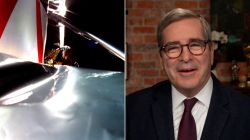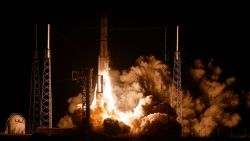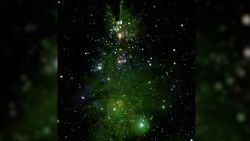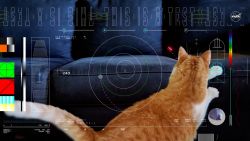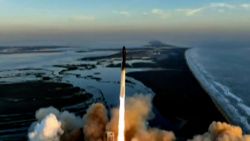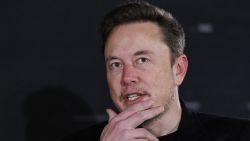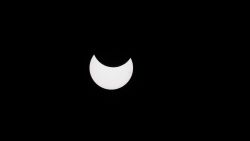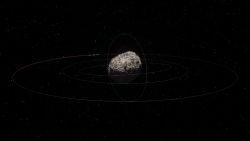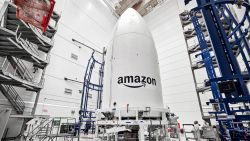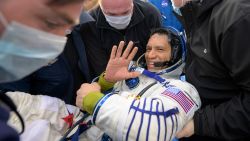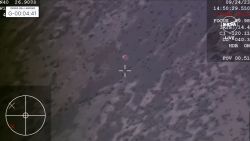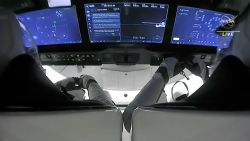Astronauts Robert Behnken and Douglas Hurley have successfully disembarked the SpaceX Crew Dragon capsule and entered the International Space Station.
SpaceX’s Crew Dragon spacecraft docked at the space station at 10:16 a.m. ET Sunday morning after launching from Florida’s Kennedy Space Center Saturday and traveling 19 hours. After making initial contact with the ISS, Crew Dragon went through a series of steps to further mate the spacecraft with its port — including linking power and creating an air-locked seal — before the first of two hatches were opened.
Behnken and Hurley are expected to remain on board the space station for one to three months, or for a maximum of 110 days.
On Sunday morning, the spacecraft made a careful approach to the space station and then made a “soft capture” — meaning Crew Dragon made its first physical contact with its docking port at the International Space Station. Crew Dragon then made a “hard capture,” which involved using 12 latches to create an air-locked seal between Behnken and Hurley’s crew cabin and their entrance to the space station and linked up Crew Dragon’s power supply to the ISS.
In pictures: SpaceX's historic mission
Behnken and Hurley emerged, smiling, from the capsule around 1:15 pm ET. They were greeted by fellow NASA astronaut Christopher Cassidy and Russian cosmonauts Anatoli Ivanishin and Ivan Vagner, who were already on board the orbiting laboratory.
NASA Administrator Jim Bridenstine called the station from the space agency’s mission control center in Houston, Texas.
“We are so, so proud of everything you’ve done for our country, and in fact, to inspire the world,” Bridenstine said.
When asked about their 19-hour journey to the space station, Hurley said he “couldn’t be happier” about the performance of SpaceX’s Crew Dragon.
The astronauts were able to sleep for a few hours, share meals and use the on board toilet during their journey. “The Dragon was a slick vehicle, and we had good airflow, so we had an excellent, excellent evening,” Hurley said.
Crew Dragon has a name: Endeavour
Astronauts Robert Behnken and Douglas Hurley gave a tour of their Crew Dragon spacecraft using onboard cameras while the vehicle was making its way toward the International Space Station on Saturday evening.
And they announced a name for the vehicle: Endeavour.
The astronauts picked that name for a few reasons, Hurley said on NASA and SpaceX’s webcast. On one hand, the name honors the years-long endeavor that was returning human spaceflight to the United States after the Space Shuttle retired in 2011. And it honors the longtime friendship that Hurley and Behnken have shared, and their histories with NASA: Both astronauts began their spaceflight careers with missions aboard the Space Shuttle Endeavour. (That vehicle’s namesake was an 18th century ship commanded by British explorer James Cook — hence the British spelling of “Endeavour.”)
Special cargo: A glittery dinosaur
NASA and SpaceX already revealed that a couple of special artworks were aboard Crew Dragon with the astronauts. But livestream viewers spotted a small, sparkly dinosaur toy on board with Hurley and Behnken as well.
During their update from orbit on Saturday, the astronauts shared what that was all about: They both have young sons who are big fans of dinosaurs, and the astronauts allowed their kids to vote on which of their toys would be stowed away on this mission.
The selection was a blue and pink, sequin-studded Apatosaurus.
What this milestone means
Crew Dragon and the astronauts have now made it through two major milestones — launch and docking — without encountering any major issues. That’s a huge win for SpaceX, which has been working toward this moment since the company was founded in 2002.
It’s also a point of celebration for NASA, which made the controversial decision to ask the private sector to design vehicles for transportation to the ISS after the Space Shuttle program retired in 2011. NASA has long partnered with the private sector, but it had never before handed over design, development and testing of a human-rated spacecraft to a commercial company.
After delays, development hiccups and some political roadblocks, a successful first launch of astronauts will mark a huge win for folks within the space agency who hope to continue using more extensive commercial contracts. That includes for NASA’s ambitions to put people on the moon in 2024.



